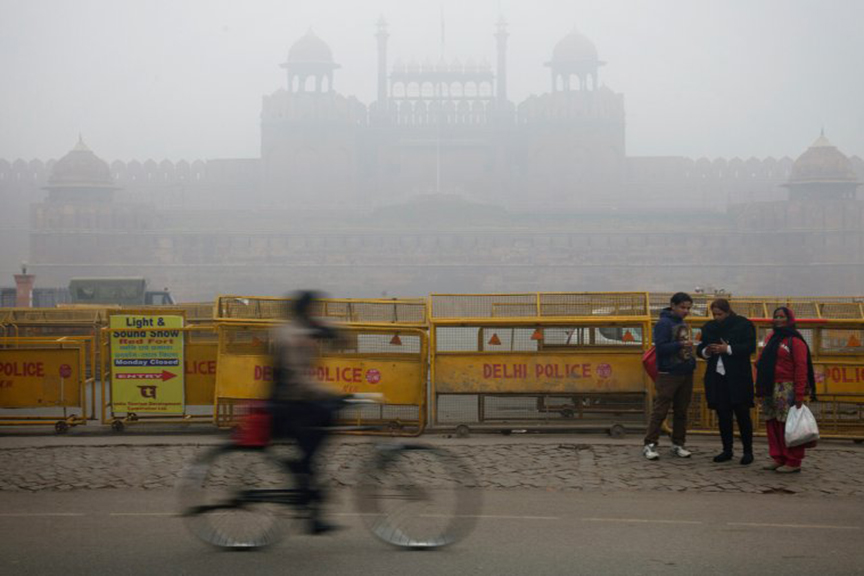The Coronavirus brought about a dip in pollution levels in the country. The lockdown offers an opportunity to find out the options among greener fuels and make a switch
With Lockdown 4.0 came multiple relaxations as central and state governments moved to revive the economy. And with these relaxations, unfortunately, came a rapid deterioration of the air quality in the capital.
According to a study conducted by IIT Delhi, there was a 49% decline in the AQI during the third phase of the lockdown. However, the reprieve was shortlived. As vehicles started hitting the roads, even though in limited numbers, the air quality in the city went for a six.
According to data from the Central Pollution Control Board, out of 36 stations in Delhi, the AQI in as many as 16 was above 200 micrograms per cubic metre till 4 pm on Monday. A shift towards cleaner fuel then might be the best solution to ensure that air quality in the capital can be maintained at satisfactory levels.
If nothing else, says Akshay Kashyap, founder and Managing Director of Greenfuel Energy Solutions, the perceptible drop in air pollution levels during the lockdown can at least create awareness about the ways in which better fuel sources for mobility can ensure cleaner air. Kashyap, who has been in the clean fuel market since 2006, adds that the economic viability along with the awareness that the lockdown has created can become the driving factors behind greater adoption of cost-effective and cleaner vehicles powered by CNG and electricity, especially in the two-wheeler category.
As the Coronavirus scare keeps normalcy away, Kashyap says shared mobility will take a backseat. In this scenario. The government can be an enabler to ensure greater adoption of green fuel. “As we move towards greater adoption of electric vehicles, the government in the interim can through tax reductions and greater incentivisation ease the way for consumers to switch over to CNG vehicles,” he says.

Another important development that will come in the wake of the pandemic, will be an increase in the use of e-commerce and delivery services; this, he says, can be used as an opportunity. “Mandating the use of all-electric two-wheeler vehicles for e-commerce and delivery services in the coming 3-6 months by up to 30-40% can be a great idea. Another area which can be worked upon is personal transport.”
As social distancing norms become the new normal, people will want to invest in personal modes of transport –in the current scenario, in which petrol and diesel-powered vehicles predominate, is a scary thought. However, this too can be used as an opportunity.
“The government can follow the carrot and stick policy. Wherein, on one hand, it incentivises the use of electric and CNG vehicles by reducing the current GST on them from 12-5% to nil, while at the same time mandating their use in fleets for deliveries” he adds.
“I am a firm believer in the use of all-electric and CNG two and three-wheelers by delivery services,” says Kashyap. An excellent idea that needs wider publicity.
Mandating the use of greener fuels by the government, according to him, will just to speed up the process their adoption by organisations and individuals. E-commerce platforms are already looking at switching to electric vehicles — if and when it is mandated, it will rev up the rate at which the transition takes place.
However, there is a question mark over whether such a move will benefit consumers in the long run, due to lack of infrastructure of CNG pumps and electric charging points. He says, “Infrastructure creation takes time and cost. When businesses evaluate the setting up of infrastructure, they do so based on return on investment, so it’s a question of what comes first — the infrastructure or the growth in demand for fuels like CNG”.
For electric vehicles the option to charge vehicles at home is also available which is makes their adoption even easier. Their use will result in increase in the supporting infrastructure like charging ports in parking areas.
Similarly when the use of electric and CNG vehicles is mandated and incentivised, the infrastructure to ensure the supply of these vehicles will also come up. He says, “Even if supply lines for production can be improved in a period of six months, manufacturers need the incentives to do so, which can only come when demand increases. While the awareness for the adoption of e-vehicles is there, there is no demand subsequently no substantial increase in the supporting infrastructure.”
Another sore point when it comes to the use of electric vehicles is the disposal of lithium-ion batteries at the end of their lives. Talking about it, Kashyap says, “There are three points to be noted here. Lithium-ion batteries have a life span of 4-5 years. Second, after their life in a vehicle is over, they can be reused for storage for another five years. Thirdly, in a 10-year span, the technology for disposal or reuse will evolve as will the government policies for recycling, so the talk around the disposal of these batteries is something we need not worry about at the moment”.
However, as the debate around the use of e-vehicles and their use intensifies, there are other cleaner alternatives for use in vehicles. Namely, liquid hydrogen and bio-fuel and while they are both in their developmental phases, manufacturers have stressed that they can be alternate fuel sources, the viability though is still in question. Particularly in the case of bio-fuel, whose production comes at the expense of change in land use for the production of cash crops rather than food grains.
According to experts, for a country like India, the better alternative is CNG as it can be produced from the decomposition of waste. This he says can also provide a solution for the huge landfills and bio-degradable waste in the country which have become a big source of problem for larger cities.
Similarly, a shift in the fuel source for power plants and the use of renewable energy sources in the production of electricity can also bring down the carbon footprints of e-vehicles. So, till the time alternate fuel sources like hydrogen and bio-fuel become viable stress on the use of CNG, LPG and e-vehicles should be the country’s focus for fuel security as well as for ensuring cleaner air.
For this, the best way forward would be the use of available green fuel sources and the move towards their greater adoption and the next few years will be crucial in deciding in which direction India is headed.
(Cover Image: The air quality in Delhi has deteriorated since relaxations were announced under lockdown 4.0 // Photo: Getty)





